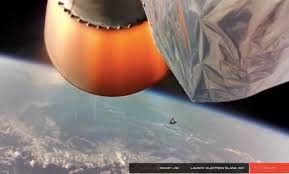
Breaking News
 LIVE ELECTION RESULTS: New York mayor, NJ & VA governor, Prop 50, Trump endorsements, latest vote
LIVE ELECTION RESULTS: New York mayor, NJ & VA governor, Prop 50, Trump endorsements, latest vote
 Sen. Markwayne Mullin Reveals Schumer Held Secret BACKROOM MEETING...
Sen. Markwayne Mullin Reveals Schumer Held Secret BACKROOM MEETING...
 RIP NYC - Muslim Communist Zohran Mamdani Wins New York City Mayoral Race
RIP NYC - Muslim Communist Zohran Mamdani Wins New York City Mayoral Race
 Dramatic Footage Shows UPS Cargo Jet Crashing At Louisville Airport
Dramatic Footage Shows UPS Cargo Jet Crashing At Louisville Airport
Top Tech News
 Japan just injected artificial blood into a human. No blood type needed. No refrigeration.
Japan just injected artificial blood into a human. No blood type needed. No refrigeration.
 The 6 Best LLM Tools To Run Models Locally
The 6 Best LLM Tools To Run Models Locally
 Testing My First Sodium-Ion Solar Battery
Testing My First Sodium-Ion Solar Battery
 A man once paralyzed from the waist down now stands on his own, not with machines or wires,...
A man once paralyzed from the waist down now stands on his own, not with machines or wires,...
 Review: Thumb-sized thermal camera turns your phone into a smart tool
Review: Thumb-sized thermal camera turns your phone into a smart tool
 Army To Bring Nuclear Microreactors To Its Bases By 2028
Army To Bring Nuclear Microreactors To Its Bases By 2028
 Nissan Says It's On Track For Solid-State Batteries That Double EV Range By 2028
Nissan Says It's On Track For Solid-State Batteries That Double EV Range By 2028
 Carbon based computers that run on iron
Carbon based computers that run on iron
 Russia flies strategic cruise missile propelled by a nuclear engine
Russia flies strategic cruise missile propelled by a nuclear engine
 100% Free AC & Heat from SOLAR! Airspool Mini Split AC from Santan Solar | Unboxing & Install
100% Free AC & Heat from SOLAR! Airspool Mini Split AC from Santan Solar | Unboxing & Install
Rocket Lab Launches 13 Cubesats on 1st Mission for NASA

Rocket Lab's ramp-up is going well so far.
The spaceflight startup launched 13 tiny satellites on its first-ever mission for NASA early this morning (Dec. 16), just a month after acing its first commercial flight.
A Rocket Lab Electron booster lifted off from the company's launch site on New Zealand's Mahia Peninsula at 1:33 a.m. EST today (0633 GMT and 7:33 p.m. local New Zealand time), kicking off the ELaNa-19 mission for NASA. [In Photos: Rocket Lab and Its Electron Booster]
Fifty-three minutes later, all of the payloads had separated from the Electron's "kick stage" and settled successfully into a circular orbit about 310 miles (500 kilometers) above Earth.
A Rocket Lab Electron booster carrying 13 NASA satellites, including 10 cubesats for agency's Educational Launch of Nanosatellites program, lifts off from the Mahia Peninsula of New Zealand's North Island on Dec. 16, 2018 on the ElaNa-19 mission.
Credit: Trevor Mahlmann/Rocket Lab
The little satellites will do a variety of work up there. For example, one will measure radiation levels in the Van Allen belts, to help researchers better understand possible effects on spacecraft. Another aims to demonstrate the effectiveness of compact, 3D-printed robotic arms; and yet another will help prove out technology for a new solar-sailing system that could allow small spacecraft to explore deep space, Rocket Lab representatives said.
California-based Rocket Lab aims to greatly increase access to space using the expendable Electron, which is 57 feet (17 meters) tall and can carry about 500 lbs. (227 kilograms) to Earth orbit on each $5 million mission. (The ELaNa-19 cubesats together weigh about 172 lbs., or 78 kg, Rocket Lab representatives said.)




